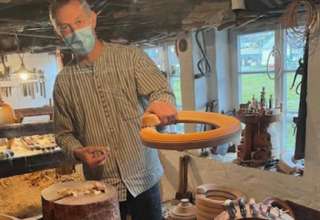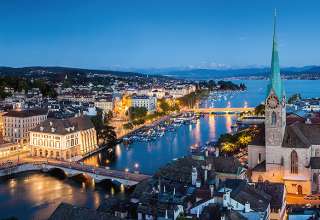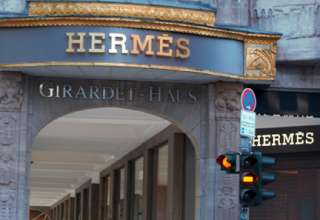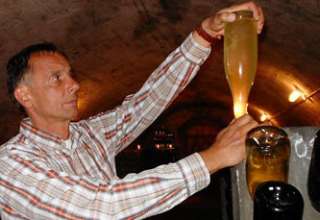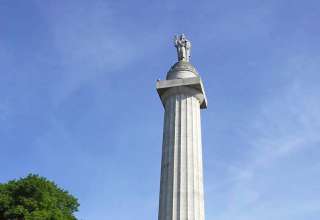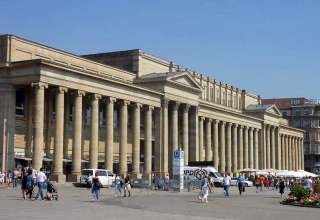Berchtesgaden, Germany
I lived in a village in the Swiss Alps for two years when I was a little girl and I remember the delicious crunch of the new fallen snow under my shoes on a cold, still Christmas Eve when I was allowed to attend midnight Mass in the village church. The bells rang sharp and clear in the frosty air, the stars twinkled in the dark sky and I knew I would soon see my Christmas presents. All was well with my wee world.
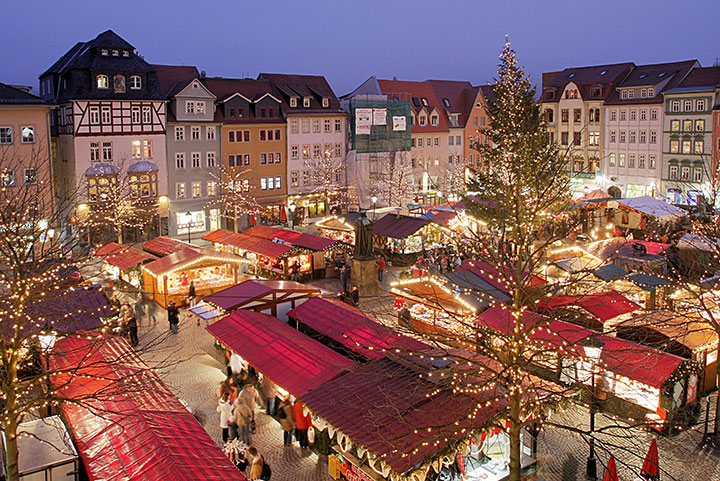
All that, as well as the larger world around me, is much changed. But a night in December, on a snowcovered mountain high above Zurich, its lights aglow in the valley below, brings back the memory of that Christmas Eve.
The Christmas markets, special treats of the season in Germany, Austria and Switzerland, evoke the Christmas in a child’s imagination. A grownup’s, too. A funicular ride to the top of another part of the Alps above Innsbruck in Austria and a romantic Christmas market on the tiny Isle of Women (Fraueninsel) in the Chiemsee in Bavaria spell an Alpine Christmas as it ought to be.
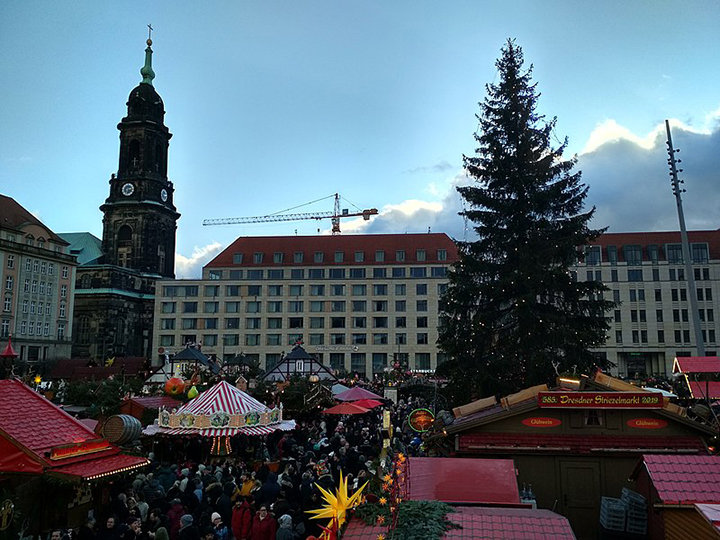
“Every Southerner knows the past is not dead,” the novelist William Faulkner famously said, “it’s not even past.” Not just for Faulkner’s kinsmen, but for all of us at Christmas. The Christmas season in the German speaking world begins with the Christmas markets, usually held from the beginning of Advent in late November to Dec. 23 or even into Christmas Eve, an ancient tradition that originated in Germany, with credit going to Dresden as the oldest market dating from 1434. In fact, an earlier market took place in Bautzen, Saxony, in 1384 and an even earlier December market is recorded in Vienna in 1294. Today, there are Christmas markets all over Germany, Austria and Switzerland, as well as in the United States where the largest is in Chicago.
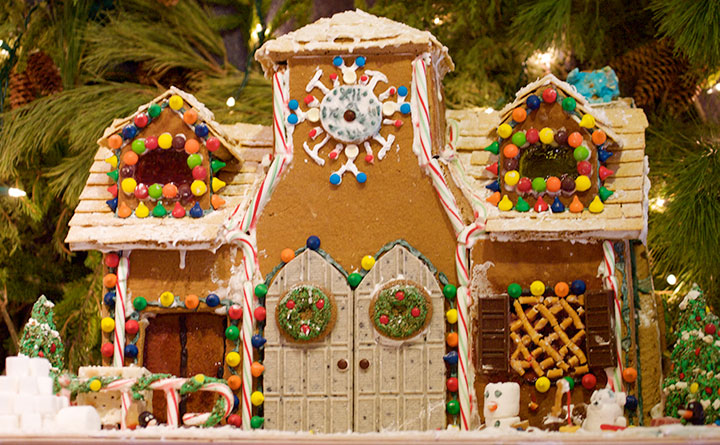
Germany’s large cities, such as Dresden, Nuremberg, Leipzig, Frankfurt and Munich all have numerous markets, large and small. In Munich, Marienplatz, the city’s central square, is a busy warren of stalls. Crowds of marketgoers jostle one another for a look at a crystal ornament, a piece of jewelry, or a hot sausage to go with the cup of gluehwein.
Nearby is the medieval market, less noisy and redolent with the fragrance of flammbrot in the oven, a pizza like bread topped with meats or cheeses and baked in a wood burning oven. Everything is hand-made; shopkeepers and demonstrators dress in medieval costumes, lending stalls a Gothic air.
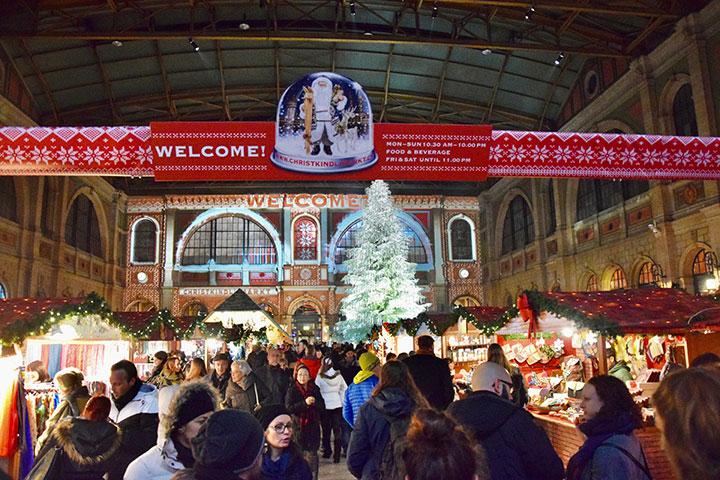
A smaller market specializes in nativity figures and scenes. One of the newer markets is located in the courtyard of the splendid Royal Residence. The most innovative of Munich’s market is Tollwood, on the huge field where the annual Oktoberfest in held. Tollwood was organized in 1991 and combines traditional booths with a wealth of international ones, some outdoors and dozens of others in tents, lighted from outside in bright colors. Huge sculptures adorn the grounds. Tollwood is a site for theatrical performances and in the bar-café tent, Munich’s music scene plays along with beer and sausages.
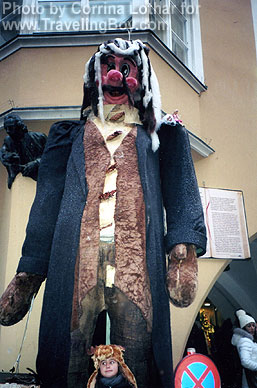
In Zurich, Switzerland’s largest city, the chief market is in the railroad station. An enormous fairy-tale Christmas tree, adorned with thousands of sparkling Swarovski crystal ornaments, presides over the market, the largest indoor market in Europe. Truly a wonder to behold.
Smaller markets are scattered throughout the city. On one of the downtown squares, just off Zurich’s famous Bahnhofstrasse shopping street, a “singing Christmas tree” entertains passersby in the late afternoon. The members of a Zurich gospel choir sing American gospel songs, swaying to the music in tiers in front of a large tree.
In Innsbruck, Austria, the Christmas market has taken over the Old Town. Stalls are set up beneath the vaulted stone arcades, leading to stalls in the narrow streets and alleys. Enormous replicas of fairy-tale figures adorn many of the second and third floors of the Old Town houses. The children are especially delighted.
Innsbruck, the capital of the state of Tirol, was once a powerful independent state, and in the 15th century the seat of the Holy Roman Empire. Tirol was divided at the end of World War I when the southern part was ceded to Italy, and on a three-day weekend Innsbruck is overrun with Italians up to shop at the Christmas market and to enjoy the Austrian hospitality. Tiroleans are open and friendly to visitors.
Skiers get out early on the northern and southern slopes surrounding the city, the site of the 1964 and 1976 Winter Olympics. Snow bunnies can ride up thousands of feet on the Hungerburg funicular and the ascent of the cable car that would leave James Bond breathless. At the top, there’s a splendid view of the city and a comfortable café-restaurant from whence to watch the skiers glide down the mountainside.
Visitors don’t have to climb to the top of the mountain to visit the spectacular Bergisel ski jumping stadium on the outskirts of the city. Designed by Iraqi born Zaha Hadid in 2002, the ski jump is used in January for a skiing event; in the summer, athletes train on a special plastic covering.
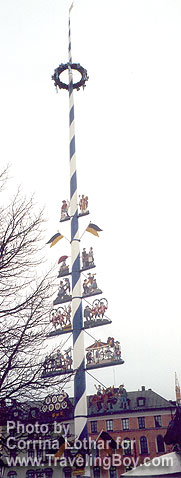
But perhaps the real charm of Christmas markets lies in the small towns and villages of Bavaria and Tirol. In Berchtesgaden, a historic old market town that has long been a winter and summer resort, the past is both dead and alive. Berchtesgaden was a favorite of Hitler’s. The houses occupied by Hitler and his Nazi henchmen were all destroyed at the end of World War II, with the exception of a hotel used by the Nazis. Tourists can visit Hitler’s bunkers beneath the hotel, and nearby is a small museum reflecting Hitler’s stay. The grim, gray Eagle’s Nest remains a curiosity, but more for its precarious perch on the mountaintop than for its association with the Nazis. The 20th century significance of the town is not mentioned in brochures or by tourist organizations. The locals want this past to stay dead.
Faulkner’s words come alive, however, in the curious ancient Christmas tradition on the feast day of St. Nicholas. As a rule, children leave their shoes outside their bedroom doors on the night of December 5th in anticipation of goodies left by St. Nick. In Berchtesgaden, however, it’s the white-bearded Bishop Nicholas who roams through the village accompanied by a crew of fearsome buttnmandl and krampus, the former covered from head to tow in straw, the latter in fur with both groups wearing hideous masks with a long red tongue that frighten more than the village children. Attached to their backs are enormous cow bells weighing up to 45 pounds that clank in cacophony as they run through the village streets with long switches in hand. Anyone in the path of these young men is subject to a blow on the legs — not a gentle one – and having black coal smeared on his or her face. Sometimes a girl is cornered and pushed to the ground; a child screams under the force of a blow to his legs. This is a violent reminder of a barbaric past, despite the concept that the original purpose was to drive out evil spirits, so beware.
Berchtesgaden still honors the coming of the Christ child by ringing bells and Christmas shooting, a custom dating back to the 17th century. Guns are fired every afternoon at 3 during the week before Christmas, to the accompaniment of church bells.
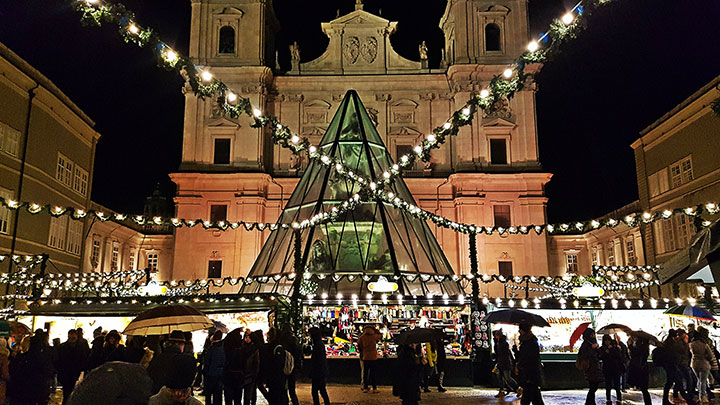
Not far from Berchtesgaden is Bad Reichenhall, a small spa town made rich by its saline springs. In the early 20th century, King Ludwig I of Bavaria built saltworks and a spa house in pseudo medieval style. The special Christmas market in Bad Reichenhall, where the Reber bakery and restaurant claim to make the original Mozartkugel (chocolate marzipan balls) sold everywhere in Salzburg, is an indoor craft market held in the graceful town hall in the second weekend of Advent.
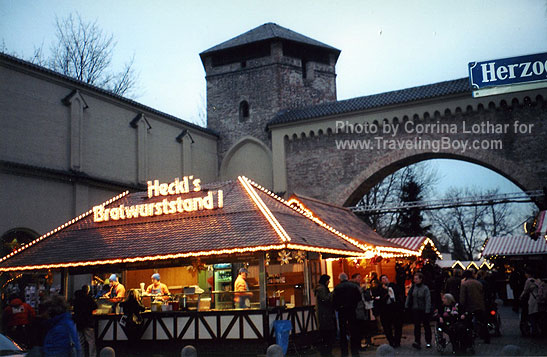
As silent as Berchtesgarden is noisy, the lovely Fraueninsel (Isle of Women) Christmas market entices visitors from neighboring towns. The island on the Chiemsee is populated by a beautiful old Benedictine convent (now used as a school), a few hotels and restaurants, a handful of charming cottages and, at Christmas time, a Christmas market sprawling over the entire little island. Lit by candles and torches, the market is a magical place, especially when snow falls. In the cemetery adjacent to the convent, candles flicker in red glass containers beside each grave. This custom is honored as well in the Berchtesgaden cemetery.
Candles, nativity scenes, special pastries, wooden Christmas tree ornaments and Christmas trees galore are part of the Bavarian, Tirolean and Swiss traditions. In these regions, children are traditionally not allowed to see their tree before sunset on Christmas Eve, but the decorations and lights everywhere, and the festive atmosphere of the Christmas markets create excitement and anticipation that goes well beyond anything commercial. Christmas is still taken seriously here, and when the bells ring out with the message of the Christ child on Christmas Eve, everyone knows something special is about to happen.
When You Go:
United Airlines flies nonstop from the U.S. to Munich and Zurich. Swiss flies from New York nonstop to Zurich. Lufthansa flies from the U.S. to Munich.
Train connections between Munich, Innsbruck and Zurich are frequent and convenient. Tickets can be purchased in the U.S. from RailEurope at www.raileurope.com.
